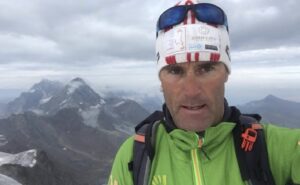Climbing on Annapurna, the first 8,000’er of the season, begins next week.
Since the successes of 2021, outfitters have marketed the peak as a quick climb that will bag clients an 8,000m summit and good acclimatization to attempt a second, taller mountain right afterward.
Yet Annapurna is hardly a mountain to hurry up. Annapurna I is the most dangerous of all the 14 8,000’ers after K2. Its south side is a formidable ice face, while the normal north side route includes large sections exposed to avalanches and falling seracs.
Until recently, since Annapurna is “only” 8,091m, it was climbed without supplementary oxygen. Yet seasoned climbers tackled the peak with caution. Many of the early 14×8,000m listers left Annapurna till last.
The post-COVID boom
Everything changed in 2021. COVID still impeded travel, but international climbers still made it to Nepal. Dozens flocked to Annapurna, many with limited altitude experience.
Yet 67 climbers eventually reached the summit, all of them in a single day. The key? Fix ropes along the entire route from bottom to top, assign every client a personal Sherpa, and supply plenty of O2.

Climbers queue toward the summit of Annapurna. Photo: Pasang Lamu Sherpa Akita
Almost all climbers pushed for the top at the same time, following the rope fixers. When this lead group ran out of rope and had to retreat, a helicopter flew extra ropes, fuel, and spare oxygen for everyone — right to Camp 4!
That resupply permitted 67 people to reach the top the following day, April 16. Only six of those went without O2: Mingma G and Dawa Yangzum Sherpa of the fixing team, Gesman Tamang and his Taiwanese client Lu Chung-Han, and Russians Sergei Kondrashkin and Dmitri Sinev. The two Russians, who climbed independently, went missing, suffered AMS and frostbite, and needed rescue.
Last year, there was no lack of ropes or fuel. Again, all 30 summits took place on the same day, April 28. Five reportedly climbed without supplementary O2.
Yet one of the few things that cannot be “fixed” conspired against the climbers. A storm developed quickly and hit the mountain at 2 pm, with many people still on the upper slopes. The descent was chaotic, especially for those who summited later or without O2.
Gianpaolo Corona and Tim Bogdanov, who climbed without O2 or Sherpa assistance, became lost during the descent. Like the Russian pair the previous year, they too needed a helicopter rescue and suffered frostbite.

Tim Bogdanov in a Kathmandu hospital with serious frostbite. Photo: Tim Bogdanov/Facebook
This year
According to the preliminary numbers from Nepal’s Expedition Operators Association, 35 foreign climbers already have permits. Seven Summit Treks, Pioneer Expeditions, Imagine Nepal, Satori Adventures, Elite Exped, and Glassier Expeditions are all outfitting an Annapurna climb. An additional four climbers, outfitted by Peak Promotion, will remove trash from the mountain.
Teams will reach Base Camp by March 15. As far as we know, all will arrive by helicopter.

Climbers train on Annapurna. Photo: Seven Summit Treks
Any previous acclimatization is up to the client. Some may use hypoxic training at home, others may trek or climb in Nepal before flying to Base Camp. Many will just begin rotations after reaching Base Camp at 4,150m.
Mingma G of Imagine Nepal has a different strategy this season.
“My clients left for Thorong Peak [6,144m] on Tuesday to acclimatize before going to Base Camp,” he told ExplorersWeb. “I think acclimatizing [directly] on Annapurna is risky.”
The outfitter’s website explains that his clients may climb Thorong Peak twice and possibly spend a night on the summit. Then they will trek back to Tatopani for a final airlift to Base Camp.

Shehroze Kashif weathered out after climbing Gasherbrum I last year. Photo: Shehroze Kashif/Facebook
There are not many details about who will climb Annapurna this season. Gelje Sherpa will be guiding for Seven Summit Treks. Pakistan’s Shehroze Kashif will be on his team.
Kashif is one of the candidates to become the youngest 14×8,000m summiter ever. The 20-year-old (he turns 21 in three days) currently has climbed 10 of the 14 peaks.
Another record seeker will climb with Mingma G’s team. The visually-impaired Jill Wheatley is aiming for her 7th 8,000’er.






